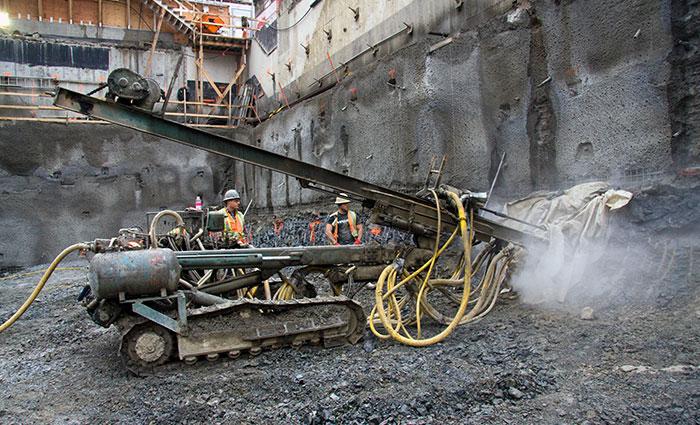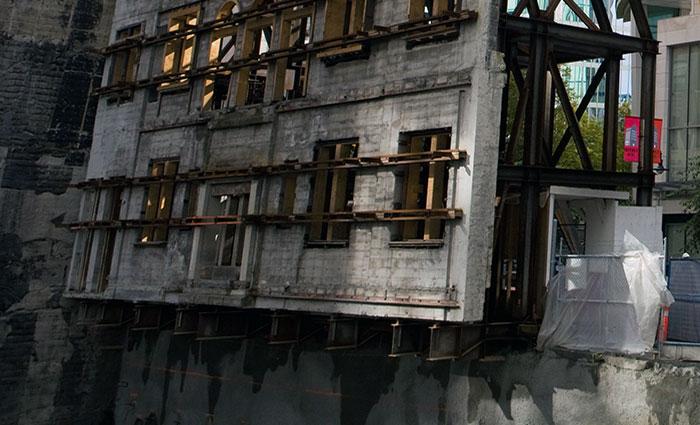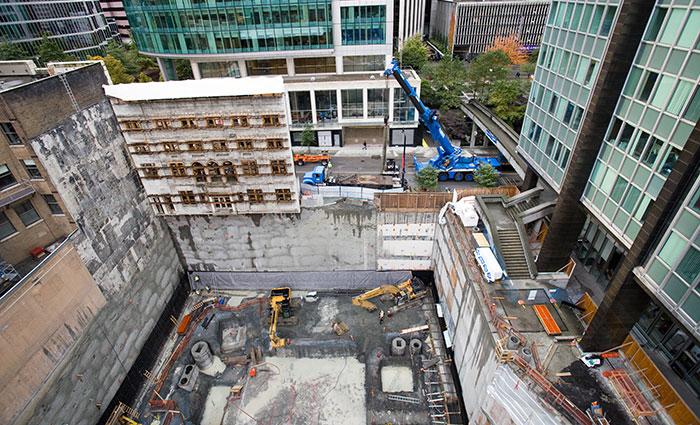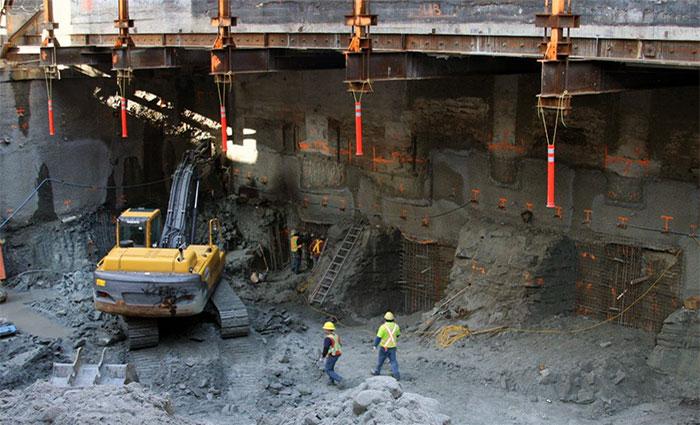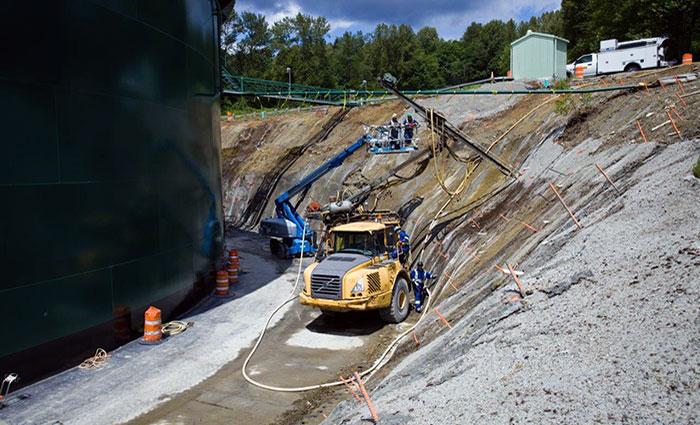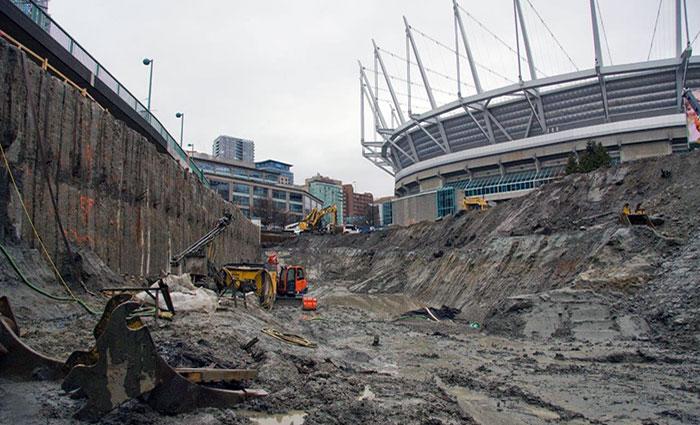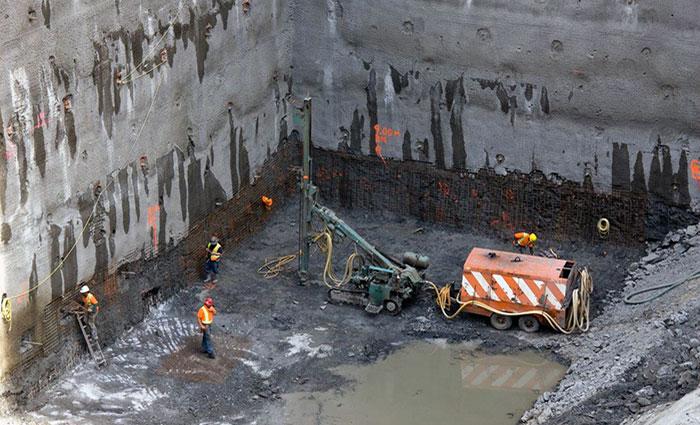Shoring is an essential part of almost any structure’s renovation or retrofit. Shoring is the practice of creating short-term supports to prop up temporarily unsafe structures for repair. They can be used to vertically or laterally to reinforce or support a weak structure while it’s being repaired, replaced, or built. For over six decades, Bel Pacific has gained the reputation of being a premier shoring contractor in Western Canada. We have a wealth of knowledge of all the different shoring systems and have the project experience to consistently provide the correct solutions to get the job done in a safe and timely manner while maximizing the usability of the space.
BelPacific is capable of working with our clients on each step of their shoring project, from initial concept to completion, specializing in the installations of pre-designed shoring systems. We add value to our client’s projects by using our years of pragmatic shoring experience to work with the project designers. We help to find a creative solution that will solve our clients’ problems, while being the most cost-effective and realistic option to implement on site.
We offer the following shoring services:
Raking Shoring
Raking shores use lateral props called “rakers” that come up from the ground to support the structure while work is being completed. Raking shores consist of several components. wall plates are fixed to the side of the wall with needles, to distribute force over a wider surface area. Then, rakers are attached to the ground using cleats, and onto the wall plates to provide support. Further bracing is added to provide extra support in all directions. Raking shores are most effective when at a 45-degree angle to the wall, however, it’s not uncommon for them to be installed at angles up to 75 degrees, depending on the available space. Raking shores are most often used on the outside of buildings and are used to support the walls of structures that may be cracked or buckling under the weight of what’s above.
Flying Shoring
Flying shores span between two walls and are used for support by creating counter pressures between them. Each wall will be fastened with wall plates from top to bottom, like with raking shores, however, rather than having struts that meet the ground, a horizontal strut will span the distance between the two walls, connecting to both. Next, further supports will attach to the top and bottom of the walls and converge onto the central horizontal strut. Flying shores are often used when one wall is being torn down or undergoing renovation, but there isn’t enough space to use raking shores, or the shores wouldn’t otherwise be able to touch the ground.
Dead Shoring
Dead shores, or vertical shores, provide vertical support to structures such as roofs, ceilings, or floors while the permanent support is being repaired or built. Unlike the raking or flying shores, which reinforce load bearing structures, dead shores become the load bearing structures themselves, allowing you to fully remove the wall temporarily. The simplest shoring system, dead shores consist of a vertical strut that spans from the floor, to the structure that needs to be supported, with further bracing for stability as needed. Dead shores are most often used in buildings to hold up a roof or higher floor while a wall is being fixed or replaced, or underneath a building when digging out underneath the foundation.
